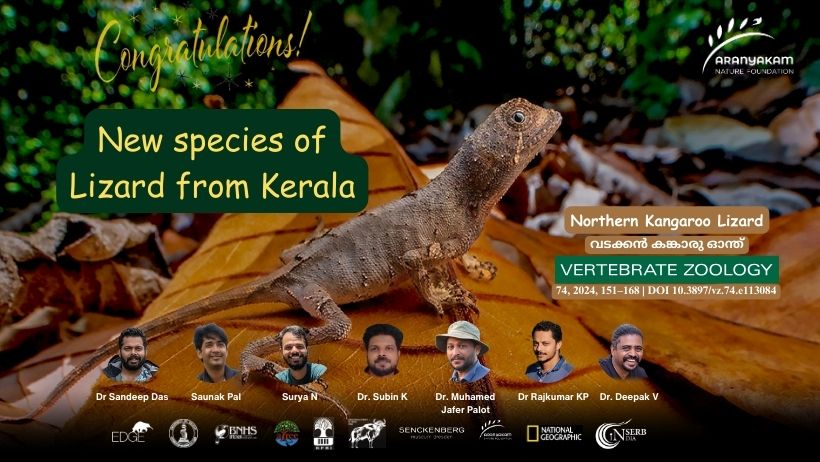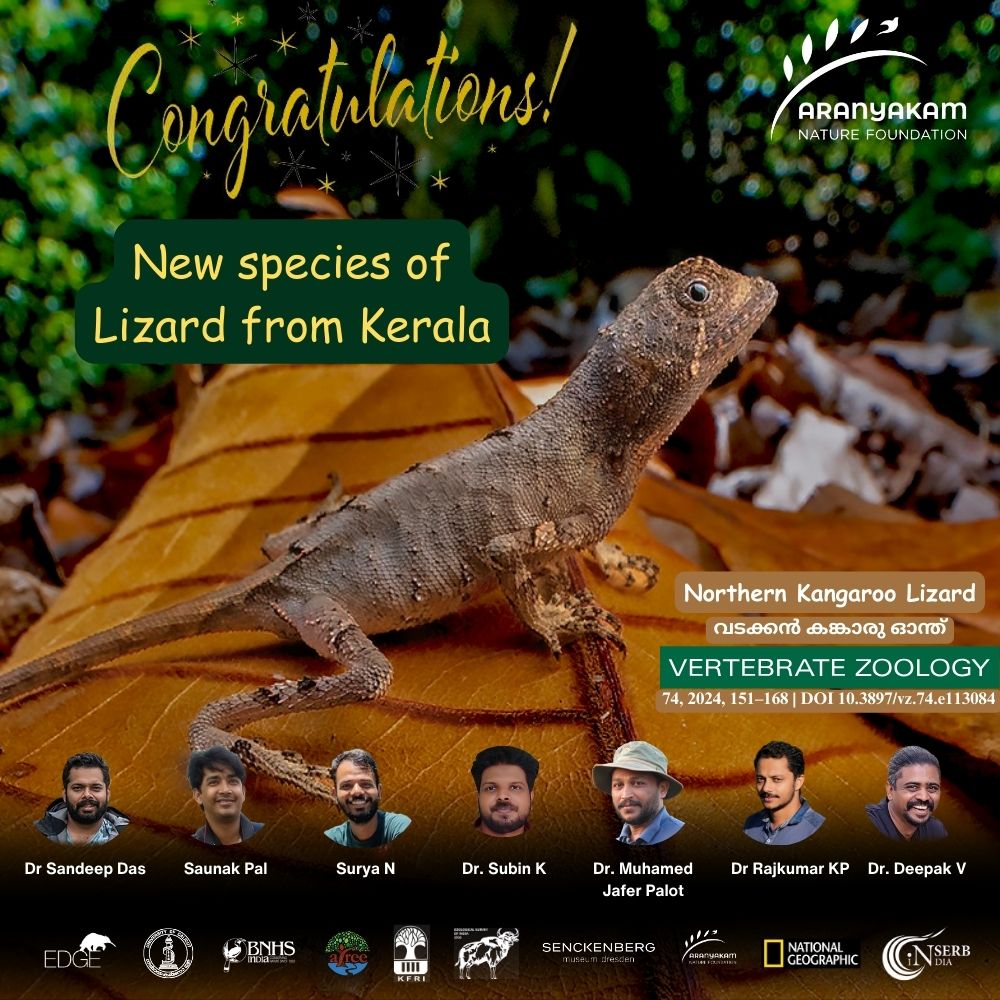

Scientists have discovered a new reptile species in Kerala, enhancing the global catalogue of approximately 12,000 reptiles. This groundbreaking research was published in the Journal of Vertebrate Zoology by the Senckenberg Museum in Germany on January 25, 2024. The research team features a distinguished group of scientists, including Dr Sandeep Das, Dr Rajkumar K P, Dr Muhammed Jaffer Palode, Dr Subin K, Dr Deepak V, alongside Shri Surya Narayanan from Tamil Nadu, and Shri Saunak Pal from Maharashtra.

The discovery occurred in the Kulamavu region of Idukki, where researchers identified the Northern Kangaroo Lizard. This diminutive creature measures 30 to 42 millimetres in length and exhibits unique behaviours, distinguishing it from its arboreal cousins by residing in soil and foliage. It earns its name from its diet of small insects and its bipedal, high-speed escape mechanism from predators. In honour of the Edge of Existence programme by the Zoological Society of London, which focuses on conserving evolutionarily unique and globally endangered species, the new lizard has been aptly named Agasthyagama edge.
The journey to this discovery began between 2014 and 2015, when the team first observed these lizards during a frog research expedition in Idukki, initially mistaking them for a known species, Agasthyagama beddomii. After consulting with Dr. Deepak Veerappan, a recognized lizard expert, and conducting extensive fieldwork and analysis of museum specimens, the team confirmed the existence of this new species. This meticulous research involved comparing genetic and morphological data with specimens from as far back as the 1930s and 1980s, housed in prestigious institutions like the Natural History Museum in London and the Chicago Field Museum.

Dr. Sandeep Das, a National Postdoctoral Fellow at the University of Calicut’s Department of Zoology, emphasized the significance of naming the species in line with the EDGE program to highlight the critical need for conservation efforts for evolutionarily distinct and globally endangered species. The discovery underscores the Western Ghats’ rich biodiversity and the potential for future discoveries in the region.
The study benefited from the collaboration of several esteemed institutions, including the University of Calicut, Zoological Survey of India, Kerala Forest Research Institute, Bombay Natural History Society, ATREE in Bengaluru, Senckenberg Museum in Germany, London Natural History Society, and the Aranyakam Nature Foundation, showcasing a global effort in the conservation and study of unique wildlife species.
